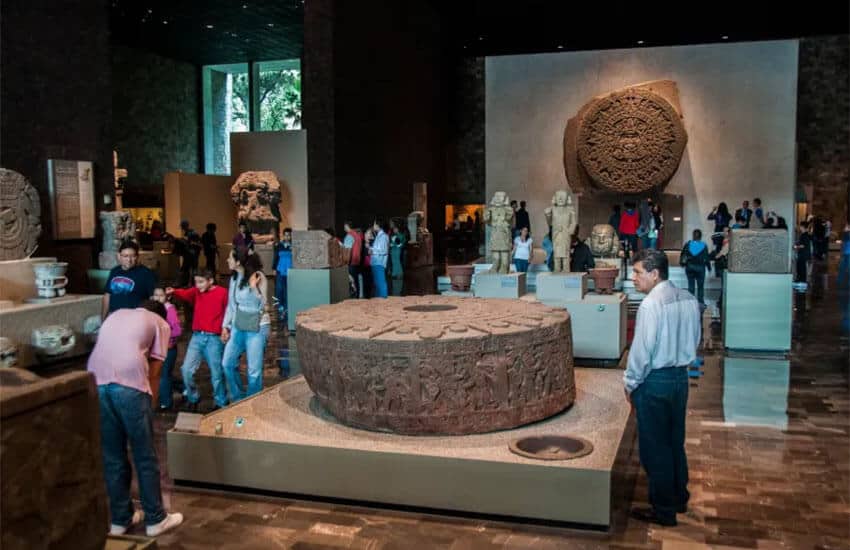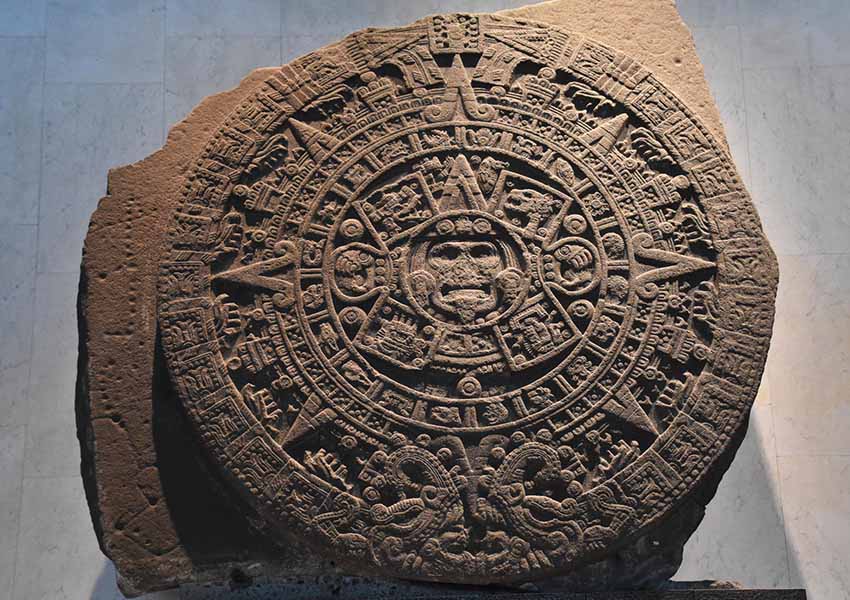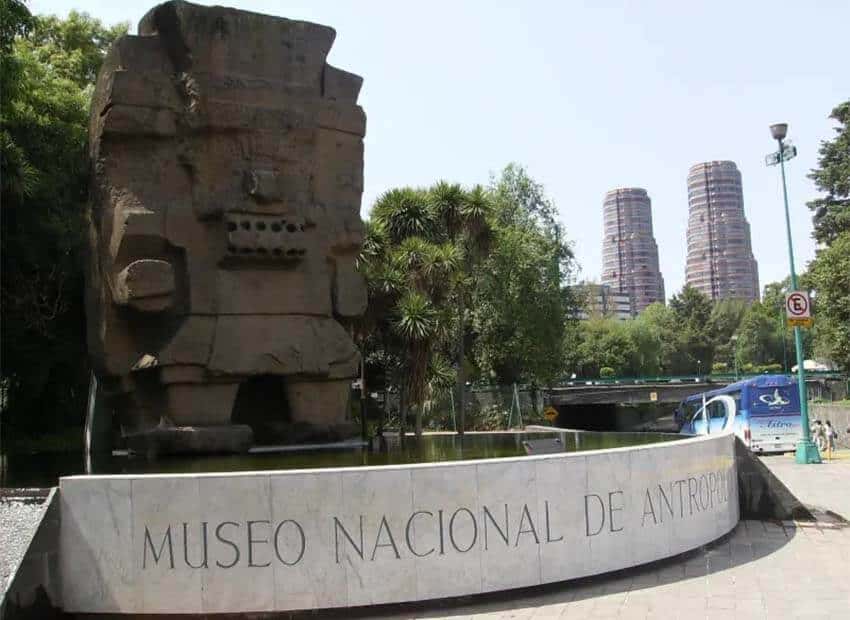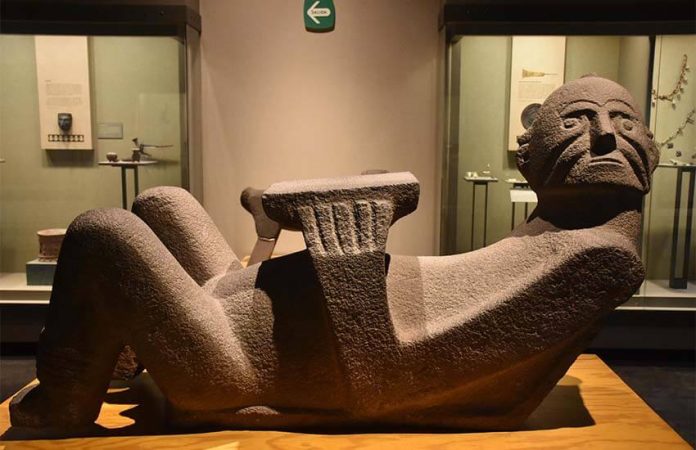Anyone who spends significant time in Mexico eventually learns that the indigenous peoples here go far beyond the ancient Mexica (Aztecs) and Maya peoples they learned about in school.
If you’re curious about the rest of the 68 indigenous groups in Mexico, the National Museum of Anthropology in Mexico City’s Chapultepec Park is the place to go. The Museo Nacional de Antropología is the nation’s largest and most visited museum, covering almost 20 acres and with 22 permanent exhibit halls housing several hundred thousand pieces of pre-Hispanic artifacts.
The current museum’s first incarnation was in 1825 when Guadalupe Victoria, Mexico’s first president, established the National Mexican Museum. As the number of artifacts grew, the collection was divided, something that happened twice between 1906 and 1940.
In 1940, the museum was named the Museo Nacional de Antropología, with a focus on pre-Hispanic artifacts and contemporary Mexican ethnography. Finally, in February 1963, construction began on the new building, which was inaugurated on September 17, 1964.

Upon entering the museum’s courtyard — after paying an entrance fee of a modest 85 pesos (US $4.25) — visitors can gaze up at El Paraguas (The Umbrella), a huge tower that pours a steady stream of water onto the ground below.
Exhibits dedicated to pre-Hispanic archaeology occupy the first floor, while those on the second floor are dedicated to modern Mexican indigenous groups.
The first exhibition hall on the right of the ground floor is the “Introduction to Anthropology” which, according to the museum’s information sheet, explains “the adaptations and changes experienced over millions of years [that] permitted the development of physical, social and cultural characteristics that defined modern-day human beings.”
The halls then continue counterclockwise in chronological order, starting with “Populating the Americas,” which includes artifacts and information about prehistoric life in Mexico from 30,000 to 2,500 B.C., then Pre-Classical Central Highlands (2,500 B.C. to A.D. 100), Teotihuacán (AD 100 to 700), the Toltec and the Epiclassic (A.D. 700 to 1200) and, finally, the Mexica (A.D. 1200 to 1521), which occupies a central location.

Placing the Mexica hall in the center of the museum, directly opposite the courtyard entrance, elicited some negative reactions.
Octavio Paz, a prominent Mexican writer and diplomat, was one of the most vocal critics of its central location. In “Critique of the Pyramid,” an essay published in 1970, he wrote that “[the] exaltation and glorification of Mexico-Tenochtitlán transforms the Museum of Anthropology into a temple.”
But Enrique Florescano, a Mexican historian, considered the museum, “a national treasure and a symbol of identity.”
Placing any indigenous group at the museum’s center would almost certainly have annoyed someone. Whatever people may think about the placement of the Mexica hall, it does contain one of the museum’s most impressive — and famous — artifacts, the Sun Stone.
The Sun Stone is believed to have been carved during the reign of Moctezuma II (A.D. 1502 to 1520). It was buried soon after the conquest, supposedly at the request of the Archbishop of Mexico. It was rediscovered on December 17, 1790, when repaving was being done in the main square.

Although there’s some debate, most scholars believe that the center image depicts Tonatiuh, the Aztec sun god. Because the stone contains the names of the days, it was initially believed to be a calendar. But it’s not. It’s a temalacatl, a gladiatorial sacrificial altar, and was most likely used to stage combat between warriors, possibly those captured during battles.
Continuing on past the Mexica exhibit are halls dedicated to Oaxaca and the Gulf Coast and the Maya, West Mexico and Northern Mexico civilizations.
It’s impossible to list all of the impressive pieces in the museum, but a few stand out, among them a massive Olmec head, the bebedores (a mural from Cholula depicting people drinking pulque), a large statue of Tlaloc (the Aztec rain god) at the entrance and a couple of figures of Chac Mool, which are also associated with Tlaloc.
Chac Mool figures always have a platter resting on their knees on which offerings — sometimes the heart of a sacrificial victim — were placed.

Some of the rooms have re-creations of some important archaeological sites and artifacts. The Teotihuacán room has a replica of the staircase from the Pyramid of Quezalcóatl and the Oaxaca and Maya rooms have recreations of tombs that were excavated in those regions.
In addition to the larger pieces, all of the rooms have display cases filled with exquisitely carved clay figures and beautiful pieces of gold.
The second floor has 12 halls dedicated to the ethnography of modern Mexican indigenous groups. According to the museum, the exhibits in those halls celebrate the “… cultural patrimony characterized by a distinctive worldview” of extant indigenous peoples.
Each room highlights different indigenous groups from across Mexico, starting with the Gran Nayar room, which focuses on the Cora, Huichol, Tepehuan and Nahua who live in Nayarit, Jalisco and Zacatecas, and ending with groups such as the Seri, Yaqui and Tarahumara, who live in Mexico’s northwest. Each also contains photographs of ceremonies and rituals still conducted by the various groups, examples of their artwork and handicrafts and, often, dioramas depicting daily life in villages.
With a bit of luck, you can catch the Danza de los Voladores (Dance of the Flyers) directly across from the museum’s main entrance (there may be a schedule, but I was unable to find it).
During this ceremony, five people (typically but not always men) climb a 30-meter pole. Four sit on the corners of a wooden square while the fifth performs a dance on a small platform. The four men at the corners have a thick rope tied around their waist, and at the end of the dance, lean back and float toward the earth.
This ceremony is most closely associated with the indigenous Totonacs, who occupy parts of Veracruz, Puebla and Hidalgo. The ceremony begun about 500 years ago during a severe drought. It’s performed to bring rain, the men representing raindrops falling.
Touring the museum will definitely work up an appetite. There’s a cafeteria onsite, but there are also plenty of stands outside near the entrance that sell food.
This isn’t a museum that can be tackled in one day; it’s simply overwhelming. It’s best to explore three, maybe four, halls in depth and return at a later time to wander through more.
Joseph Sorrentino, a writer, photographer and author of the book San Gregorio Atlapulco: Cosmvisiones and of Stinky Island Tales: Some Stories from an Italian-American Childhood, is a regular contributor to Mexico News Daily. More examples of his photographs and links to other articles may be found at www.sorrentinophotography.com He currently lives in Chipilo, Puebla.
